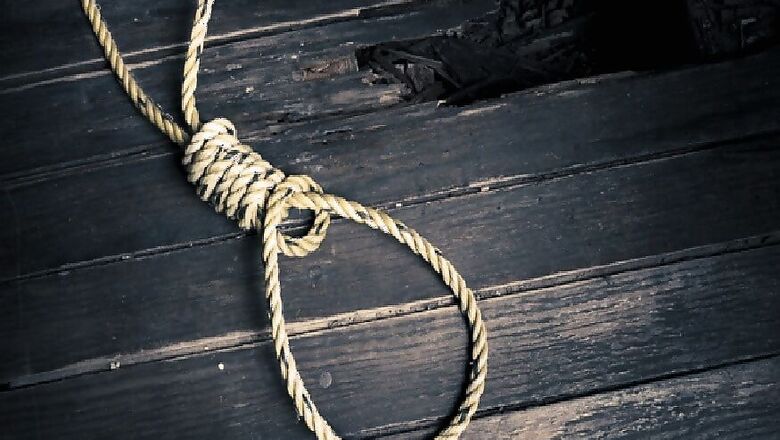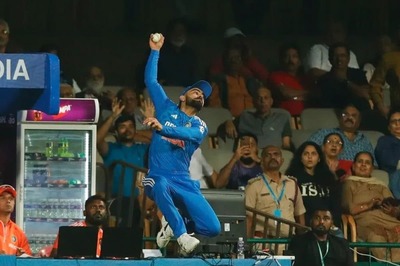
views
Today is 10th September, International Suicide Prevention Day. It's just another day when a person from the armed forces kills himself due to stress or 25-50 people attempt suicide across the country. It's going to be just another day when 55 housewives kill themselves and 33 distressed farmers gulp pesticide. It's also another day when a student kills himself every hour. Are these numbers big enough to hang our heads in shame, considering the many people we've failed in helping, across various spectrums?
Let me tell you another fact. A report published by World Health Organization (WHO) in 2014, “Preventing Suicide: A Global Perspective”, reported that in India, in 2012, 2,58,057 (158,098 men and 99,977 women) people committed suicide. This was the largest number for any country in the world.
If this is not enough, 40% of male suicides and 56% of female suicides are in the age group of 14-29 (Source Lancet Study, 2012, Dr. Vikram Patel e. al.). In this age group, suicide has already surpassed road accident as the single biggest cause of death.
But why should we care? The number of suicides in India is not correctly counted. Severe stigma apart, Section 309 of Indian Penal Code (IPC) that criminalizes suicide attempt even now, exists in the statute book and is a serious deterrent in correct reporting of suicide. And number of suicide attempts are not even known. The conservative estimate is that number of those who attempt suicide is 25-50 times of those who actually kill themselves and number of those with recurrent suicidal ideation is in excess of 100 times.
Naturally then, those who do eventually kill themselves, suicide attempt and suicidal ideation have already become the largest public health issue in the country. It is also the most neglected subject.
Sadly, suicide is not yet part of the national discourse. Also, a problem of this magnitude needs composite national response where national, state, city and village governments, all public and private corporates, schools and colleges, civil society come together and take a vow, no more business as usual.
But key issue is how to change the narrative. It is here that I exhort to the nation, time has come to embrace the “Mission Zero Suicide” where systematic reduction and eventual elimination of suicide and suicide attempt becomes a national obsession.
The reason for such a narrative is not only humanitarian and one of changing the social compact; it is one of looking differently-creating a new calculus, of economic reasoning for concerted attack on suicide elimination. A ball park analysis by me, puts life-cycle cost of persons committing suicide in just one year is mammoth Rs. 25000 Crore and every passing year this number gets compounded.
The Mission Zero Suicide is something whose time has come.
Indubitably, such a mission is an audacious goal. Most will say it is utopian. But it is time to invert the pyramid and first accept that suicides are preventable-and that every single suicide has to be prevented. Nay-sayers will also ask- What are the different components of Mission Zero Suicide? Has it worked any where? Will it work in India? Well, these are difficult questions, but I have tried to answer all of them in my composite article- “Zero Suicide: Not a Utopian Goal”, published in the news paper The Hindu on 6th August 2017.
Nonetheless, I do feel a necessity to recapitulate what critical measures are needed to turbo-charge the Mission Zero Suicide.
One, the very first thing, that is needed is changing the way we count suicide and suicide attempts. This has to go concurrently with total decriminalization of suicide attempts that is possible only with taking off Section 309 of IPC off the statute book. Only once we have the reliable data, only when we arrive at causes that are responsible for high suicide level, then only we can take first baby step for evidence based suicide prevention.
Two, suicide is a society wide phenomenon and we need to kick-start the process of creating a large army of informed gate-keepers who work as first aid workers for those with suicidal ideation and with survivors of suicide attempts. Educating such gatekeepers about effective management of persons with suicide risks is a critical task that has to start now.
Three, as I have said earlier, substantial reduction and subsequent elimination of suicide cannot be merely job of the governments ( though governmental agencies at all the levels –national, state, city and village have to reorient them ), the national mission of Zero suicide can be turbo charged only with active involvement of all the stakeholders. This definitely calls for unprecedented national coalition.
Four, there is case for substantial increase of resources- and improving institutional, human and financial capital manifold. The financial trade off of saved lives justifies such scaling up of resources. Also the country needs to make research in the field of suicide prevention a key priority area.
Five, the time is now, to immediately set up National Taskforce for Elimination of suicide. The country has experience of eliminating many public health pandemoniums and when the effort was initiated, it was always considered an impossible task. There is no reason why we will not succeed in our effort here.
Six, it has been globally proven that reducing access to means of suicide has worked rather well. Such a strategy has to be part our national endeavor. A case in point is high level of suicide in rural India using pesticide.
Seven, targeted education, carpet bombing of suicide prevention messages through media and social media will go a long way in creating the right environment.
Lastly, suicide and suicide attempt is an individual act though there are clearly identified and identifiable vulnerable groups. At a broad level, different approaches will be required for different groups and finally at micro level, the suicide prevention activity has to be delivered intelligently and compassionately at the individual level. Also all Indian states are not at same level. Similarly metropolitan cities, tier two and three towns, small towns and villages all will require customized focus. It is a gigantic task. There is no easy solution. But time to start is now.
There is enough reason why we must care?
And Mission Zero Suicide –thy time has come now. Wake Up India, today WHO says there is one suicide globally every 40 seconds and by 2020, there will be one every 20 second. And countries like India will be main contributor.
So it is action time. Tomorrow will be too late.
(Author is Principal Instigator “Action Group-Mission Zero Suicide India”. He also was Member Government of India Mental Health Policy Group)




















Comments
0 comment